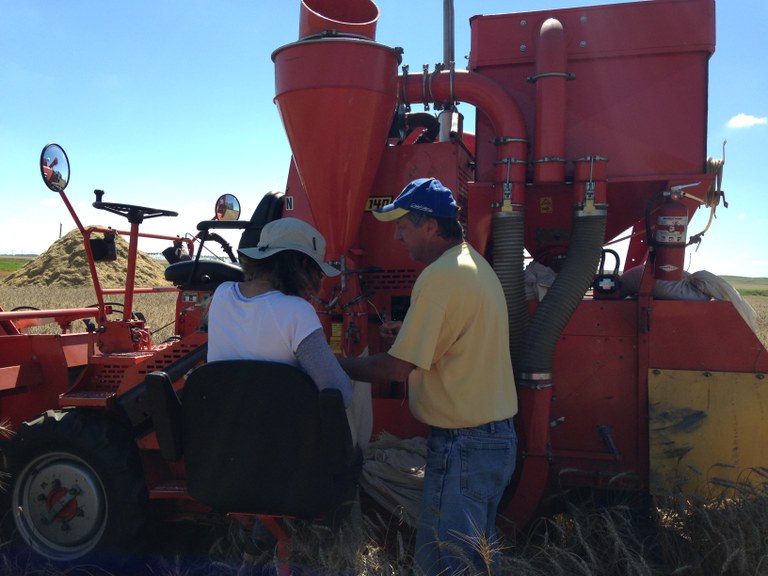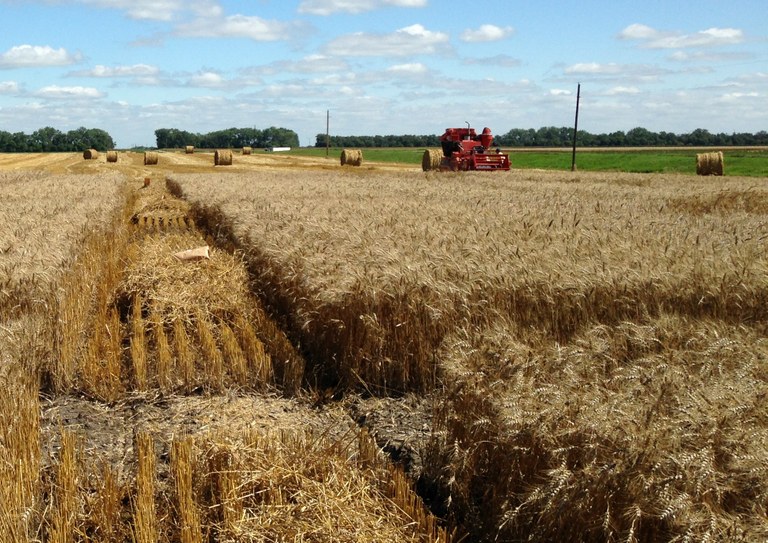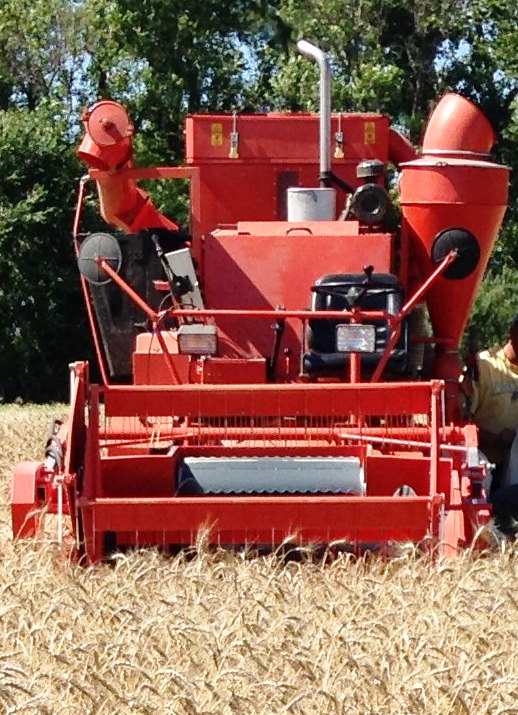Plot Harvest Equipment
Along with field-scale combines with pickup and straight-cut headers for Foundation seed production, the CREC also owns or operates 7 plot combines. That may seem like a lot of equipment, but we harvest close to four hundred trials (each with 6 to 85 treatments and 3-6 replicates) at the Carrington REC and the Oakes Irrigation Research Site, and at trials at locations such as Cathay, Dazey, Fingal, Hurdsfield, LaMoure, Melville, Park River, Prosper, Robinson, Sykeston, and Wishek, as well as near Ada, East Grand Forks, and Thief River Falls, Minnesota. We also cooperate with the REC’s at Langdon and Williston, using their equipment to harvest jointly-managed plots at those locations.

Most of our plot combines have straight-cut headers that cut a 4 to 5-foot swath, but some crops (like canola and buckwheat) are swathed with our plot-scale windrower. Plot combines have long crop dividers on the headers that carefully separate the rows so each individual plot is harvested and information record separately and accurately. Lifters at the sickle bar aid in crop pickup for some crops. Each plot combine carries two operators, one to drive the equipment and control the ground speed and processing controls, and another to collect individual samples and tie bags. (Another Center Points blog (click here) describes the tagging and organization that occurs before and after the harvest operation.)
Sunflower and corn combines take two rows at time. Some seasons, the sunflower harvest is so close to other small grains that we collect heads by hand and run them through the harvesting equipment later in the winter. New to our equipment line-up is a (used) modified beet lifter: watch for another Center Points blog post about beet equipment.
Mechanically and internally, our research plot combines bear strong resemblance to field-scale combines, with a feeder house, separator, and sieves. By design, research plot combines clean out much more thoroughly than field-scale equipment, with limited spots for seed cross-contamination.
While most of the plot-specific equipment technology is German, some parts can be sourced locally. Specialty items are only available from a few manufacturers, so our agronomy technicians must find innovative modifications or fabricate parts to keep our combines operating properly.
Because our plot combines don’t have straw choppers, we “clean up” our post-harvest plots by running across the area with a conventional combine, and harvest guard rows at the same time.

Most of our research plot combines don’t have cabs, so harvest crews often wear protective gear such as dust masks, goggles, sunscreen and insect repellent as they work.
Extra care is taken between increase fields and research trials to clean seed and dust from combines to prevent cross-contamination. Certified organic trials have their own dedicated equipment and also undergo rigorous cleaning between uses to insure preservation of identity-preserved seed lines. Our plot combines have on-board compressors and hoses for in-field cleaning.
From the 2015 plots, we expect to harvest the following grains, legumes, and oilseeds: barley, buckwheat, camelina, canola, chickpea, corn, cowpeas, crambe, dry bean, durum, einkorn, emmer, fababean, field pea, flax, lentil, oats, rice, rye, safflower, soybean, spelt, spring wheat, sunflower, and winter wheat.

Stay safe this season, whether you are operating equipment or sharing the road with harvesters.
Linda Schuster
Administrative Secretary


